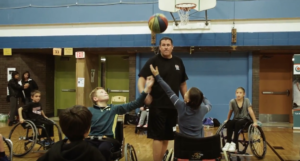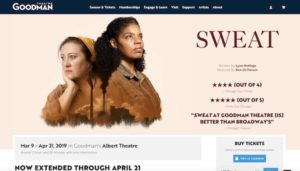Mondays with Mike: In the clutch
April 22, 2019 • 6 Comments • Posted in Mike Knezovich, Mondays with MikeThe first time I operated a clutch and a manual transmission was during my first summer break after my freshman year at the University of Illinois. And it wasn’t in a car, but on a motorcycle. My high school best buddy was also back after his freshman year in Wisconsin. He showed up at my house with a Honda CB750, about the coolest motorcycle available at the time. He took me for a ride and invited me to give it a try—with him as a passenger.

An example of a Honda CB750. I’d ridden minibikes before, but this was the first real motorcycle.
Jimmy was and is a very trusting man.
It was herky, it was jerky, but hell if it wasn’t fun. A couple years later, a friend gave me instruction on his manual clutch Volvo station wagon, and for decades I never drove a car with anything but a stick shift.
I’ve always liked cars well enough but, for most of my life, I’ve been partial to motorcycles, and have owned one or another for decades. That run ended a couple years after we moved to downtown Chicago. Garaging a motorcycle is expensive in our neighborhood. More important, riding has always been an escape, a sort of meditation for me, but riding downtown—for me (lots of people do it)—just seems more like combat.
Riding a motorcycle requires hyper vigilance, wherever one rides. That may seem contradictory to my characterizing it as meditative earlier. To explain, my brain can spin hard sometimes, and it feels like I’m thinking of everything at once, unable to focus on one thing. I think it’s probably the survival instinct—nothing helps me focus and be in the moment like riding a motorcycle.
To help ameliorate the inherently greater risk of riding on two wheels instead of four, I committed myself to being as safe as I could be. I took the Motorcycle Safety Foundationclasses, I always wore a helmet and protective clothing, and I did track days. Riding on a racetrack might seem to be a dangerous thing to do, but it was infinitely safer than riding on public roads. Because, no cars. No cars to make a left in front of you. No cars to change lanes into you without notice. No cars to rear-end you at a stop sign.
The training made me a much better rider, and it improved my driving just as much. It taught me how dangerous bad behavior behind the wheel looks like from a vulnerable motorcyclist’s point of view. That just made me resolve to work harder at driving safely. Motorcycle training also taught me that what we call defensive driving shouldn’t mean passive driving. For example, if there’s a car doing weird weaving things in front of you, you look for an opportunity and then you gas it to get ahead and leave the wanderer behind.
Today, I don’t much like driving. That’s partly because I don’t do it as often, I’m sure. And because I use Zipcar, (essentially a short-hop rental service), I’m not always driving the same car. Jesus, how many different ways should there be to start the damn car? The user interfaces, in tech terms, are not in the least bit standardized between cars.
My observation is that over the past several years—here in the city, anyway—drivers have gotten worse than ever. That may also be a function of my driving less and being less sharp.
But I think there’s something else at work. There’s distracted driving, which has always been a factor, but cell phones substantially compound it. Between ride-sharing services and the myriad food delivery services, there are always a ton of cars on the road. And lots of these drivers are part-time, every-now-and then practitioners. They are slaves to their phone GPS, from what I can glean from some close calls, when the voice tells them they missed a turn and it’s rerouting, they panic and make a U-turn right in front of other drivers.
Modern cars also have tons of electronics and alerts, ostensibly to make things safer. I’m a complete believer in things like ABS and traction control, but I’m not at all certain about all the features–backup cameras, for example, leave me cold.
All of this thinking coalesced a few weeks back when I saw an article in the NY Times headlined: “Forget Self-Driving Cars. Bring Back the Stick Shift.”
The headline made me skeptical at first—maybe just another Luddite cranky guy like me wrote this?
The author is a psychiatrist, and his premise is that some safety technology has the unintended consequence of lulling drivers into being less mindful. And that driving a stick is one way of keeping a driver engaged.
And he makes a pretty good case for his hypothesis. From the piece:
“Backup cameras, mandatory on all new cars as of last year, are intended to prevent accidents. Between 2008 and 2011, the percentage of new cars sold with backup cameras doubled, but the backup fatality rate declined by less than a third while backup injuries dropped only 8 percent.
Perhaps one reason is, as a report from the National Highway Traffic Safety Administrationput it, “Many drivers are not aware of the limitations” of the technology. The report also found that one in five drivers were just like me — they had become so reliant on the backup aids that they had experienced a collision or near miss while driving other vehicles.”
The piece refers to fatalities inflicted by experimental self-driving cars. The interesting, if tragic point: During testing, these cars had a human who was there to intervene if something went wrong. But all that tech lulled the human car-sitters into inattention.
The piece closes with the author’s recollection of his first stick-shift car:
“When I bought that first five-speed BMW, my dad cautioned me about safety, thinking that driving a stick would be more distracting and less safe. He was wrong. Though research on the safety of manual transmissions is scant, one study on the driving performance of teenage boys with A.D.H.D. revealed that cars with manual transmissions resulted in safer, more attentive driving than automatics. This suggests that the cure for our attentional voids might be less technology, not more.”
Hear, hear!



